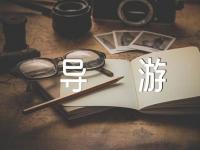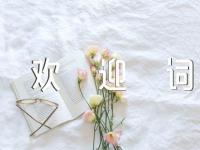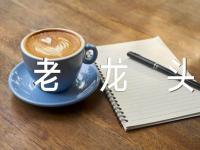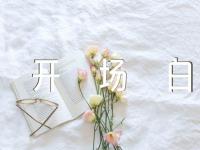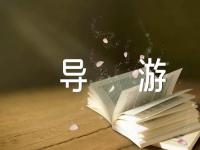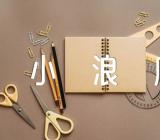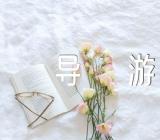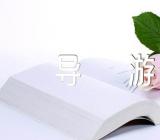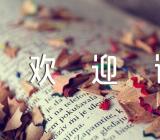【www.shanpow.com--导游词】
篇一:[颐和园英语]颐和园介绍英文版
颐和园介绍英文版
Situated in western outskirts of Beijing, the Summer Palace is 10 kilometers from the central city. It is China"s leading classical garden which enjoys a worldwide reputation. The Summer Palace was opened to the public in 1924 and included in the UNESCO world heritage list in 1998. A whole day is needed to view it in detail.
The Summer Palace was first built in 1153 and served as an imperial palace for short stays away from the capital. Empress Dowager Ci Xi rebuilt it in 1888 with a large sum of money which had been appropriated to build a Chinese navy.
The two main elements of the garden are Longevity Hill and Kunming Lake. Kunming Lake, with an exquisite building in the middle, takes up three quarters of the garden"s 290 hectares. The garden consists of three parts: the political activity area, the empress"s living quarter and the scenic area which separately centers on the Hall of Benevolence and Longevity(1), the Hall of Jade Ripples(2) and the Hall of Happiness and Longevity(3), and Longevity Hill(4) and Kunming Lake. The groups of buildings, hills and lakes, together with the background of West Hills, give an ever changing scene.
The buildings on the southern slope of Longevity Hill are characteristic of the garden. Cloud-Dispelling Hall, the Pavilion of the Buddhist Incense(5) and the Wisdom Sea(6) on the axis line are flanked by the Wheel Hall, Wufang Pavilion and Baoyun Pavilion and are major attractions. The Pavilion of the Buddhist Incense is 41 meters high and stands on a 20-meter-high terrace. At the foot of Longevity Hill is the 728-meter-long passageway which links the three areas together. The passageway is famous for its paintings and at its western end is a 36-meter-long Marble Boat(7).
The bridges of the western causeway of Kunming Lake are replicas of the bridges of famous Su and Bai causeways on West Lake in Hangzhou. The marble Seventeen-Arch Bridge which spans the Eastern Causeway to South Lake Island has balusters topped by 540 carved lions in different poses.
Back Lake at the northern foot of Longevity Hill is natural and peaceful. On its bank is Suzhou Street, a replica of a commercial street in the old days. At the northeastern corner of the garden there is the Garden of Harmonious Interest which imitates the famous Jichang Garden(8) in Wuxi, Jiangsu Province. Diminutive and elegant, it is known as a garden within a garden. .
Notes:
1. the Hall of Benevolence and Longevity 仁寿殿
2. the Hall of Jade Ripples 玉澜堂
3. the Hall of Happiness and Longevity 乐寿堂
4. the Longevity Hill 万寿山
5. the Pavilion of the Buddhist Incense 佛香阁
6. the Wisdom Sea 智慧海
7. the Marble Boat 石舫
8. Jichang Garden 寄畅园
篇二:[颐和园英语]颐和园中英文导游词
颐和园是我国现存规模最大,保存最完整的皇家园林,被誉为皇家园林博物馆。
颐和园中英文导游词范文1:
大家好,这次去颐和园由我带大家去游览。对了,忘记说,我的名字叫吴洋羊,大家叫我洋羊就可以了。
Everybody is good, go to the Summer Palace by me to take you to visit this time. Rightness, forgot to say, my name is Wu Yang sheep, you call me the sheep.
快到颐和园了,我先向大家介绍一下。颐和园位于北京西北郊,主要是有万寿山和昆明湖。再提醒大家几点。1。不能乱扔垃圾,要扔就扔在周围的垃圾桶。2。要跟紧我,颐和园很大,一不小心会迷路的。3。带的贵重物品自己放好。
Quick to the Summer Palace, I introduce to you first. The Summer Palace is located in the northwest Beijing, is mainly with longevity hill and kunming lake. Remind you again what time. 1. Don"t litter, to throw it in the surrounding the trash. 2. To closely to me, the Summer Palace is very big, would get lost carelessly. 3. Take valuables myself.
这就是颐和园的大门,很大,很宽阔。
This is the gate, the Summer Palace is very large, very wide.
大家跟我一起进来。
Everyone come together with me.
瞧,这是远近闻名的长廊,全长728米,共273间,是中园园林中最长的游廊,1992年被认定为世界上最长的画廊,列入“吉尼斯世界纪录”,廊上的每根枋梁都有彩绘,共有图画14000余幅,内包括山水风景,花鸟鱼虫,人物典故等。没有哪两幅画是一模一样,没有一点儿相似的。
Look, this is the famous promenade, the total length of 728 meters, a total of 273 rooms, is the longest in the garden landscape in the veranda, was identified as the world"s longest art gallery in 1992, listed in the "guinness book of world records," gallery on each fang liang have coloured drawing or pattern, there are pictures of more than 14000, including landscapes, flower, such as characters and their stories. No two picture is the same, not a bit similar.
别忘了看两旁的花草,也很美。
Don"t forget to look on both sides of the flowers and plants, is also very beautiful.
现在走完长廊了,来到万寿山脚下。大家抬头向上看,那座八角宝塔形的三层建筑,就是佛香阁。下面的一排排金碧辉煌的宫殿,就是以前很漂亮的排云殿。大家随我一起爬上万寿山吧。
Now walk the promenade, came to the foot of longevity hill. Everybody looked up and look up, the anise three layers of pyramid building, is the Buddha incense. The following rows of resplendent and magnificent palace, is used to be a beautiful cloud temple. Everyone with me to climb to the longevity hill, have.
现在已经在万寿山了,看一看下头的景色。这下头是昆明湖。
Is now in the longevity hill, take a look at the head of the scenery. The head is kunming lake.
大家跟我一起下去吧。
You go down with me.
这就是昆明湖,清得像一面镜子,绿得像一块碧玉。想坐游船的可以去,等会儿到这集合。
This is the kunming lake, clear as a mirror, like a piece of green jade. Want to take a cruise ship can go to, come to that later.
现在,看这边的桥,叫十七孔桥,因为它有十七个孔。桥的的栏杆上有上百根石柱,柱子上刻着小狮子。这么多的狮子,姿态不一,没有哪只是相同的。
Now, on this side of the bridge, that the marble seventeen-arch bridge which, because it has the 17th hole. There were hundreds of pillar in the bridge railing, pillars carved with a lion. So many lions, different attitude, which is just the same.
今天的游览结束了,下回再见。拜拜!
Today"s tour is over, see you next time. Bye bye!
颐和园中英文导游词范文2:
亲爱的游客们:
Dear visitors:
大家好,我是阳光旅行社的导游,我姓罗,你们可以叫我小罗。很高兴能为您服务,希望您们旅行快乐。今天,我们要去美丽的颐和园游玩,它是被列入《世界名录》的皇家园林,但是在游玩的时候我给你们提几个要求:不要到处走动,以免掉队;不可以抽烟;不可以乱扔垃圾。
Hi, I"m sunshine travel guide, my name is luo, you can call me xiao luo. Glad to be of service, I hope you happy journey. Today, we"re going to visit the beautiful Summer Palace, it was included in the list of the world "royal garden, but the pleasure when I gave you a few requirements: don"t move around, lest left behind; Can not smoking; Can"t litter.
现在我们就进了颐和园的大门,绕过大殿,就来到有名的长廊了。看,那绿漆的柱子,红漆的栏杆,多漂亮呀!这条长廊长七百多米,分成二百七十三间,每一间的横槛上都有五彩的画。几千幅画没有哪两幅是相同的。这么特别的景色,您一定没见过吧!
We are now into the door to the Summer Palace, around the hall, came to the famous long corridor. Look, the pillars of the green paint, red paint of the rail, how beautiful! This corridor of more than seven hundred meters long, divided into two hundred and seventy-three rooms, each of the cross on the sill have colorful pictures. No two thousands of painting picture is the same. Such a special scenery, you must have never seen!
走完长廊,我们就来到了万寿山脚下,抬头仰望就可以看见一座八角宝塔形的三层建筑耸立在半山腰上,屋顶上的琉璃瓦闪闪发光,那就是佛香阁了。下面一排排金碧辉煌的宫殿,就是排云殿了。
Walk the promenade, we came to the foot of longevity hill, look up you can see a three layer architecture of anise pyramid stand in the hillside, the glass tiles sparkling in the roof, that is the buddhist incense. The following rows of resplendent and magnificent palace, is the row of cloud temple.
我们现在登上了万寿山,颐和园的景色大半收在眼底。看前面那就是昆明湖了,昆明湖静得像一面镜子,绿得像一块碧玉,现在我们就去昆明湖细细游赏吧!
We are now on the longevity hill, the Summer Palace landscape most in view. Look at the front that is kunming lake, kunming lake quiet like a mirror, like a piece of green jade, now we will go to kunming lake finely touring!
看,昆明湖好大呀,它周围的堤岸也好长呀。我们现在要到昆明湖的小岛了。通向小岛的这座桥是有名的十七孔桥,这座桥有“三多”,一是桥洞多,二是狮子多,三是石柱多。看,这座桥的每根石柱上都雕刻着精美的小狮子。这么多的小狮子,姿态各异,没有哪两只是相同的,真是人间极品。
Look, kunming lake good big ah, bank or grow around it. We now have to go to kunming lake island. To the island of the bridge is famous, the marble seventeen-arch bridge which the bridge has "sanduo", it is a little tunnel, the second is the lion, the three pillars of is. Look, the bridge has in each pillar carved with beautiful little lion. So many little lion, different posture, no two are just the same, really juicy.
颐和园到处都有美丽的景色,说也说不尽,下面请你们细细游赏吧!一会儿在这里集合。
The Summer Palace is filled with the beauty of the scene, said also said not, below please be touring! Collection here in a minute.
颐和园中英文导游词范文3:
大家好!欢迎来到颐和园,今天由我来担任你们的导游,我叫杨依璠,大家可以叫我杨导游,废话不多说,现在就开始我们一天的旅程吧!
Everybody is good! , welcome to the Summer Palace today by me to serve as your guide, my name is Yang in Fan, you can call me Yang, tour guide, please donate said, now let"s start our day trip!
首先,我们绕过大殿,来到有名的长廊,这条长廊有七百多米,分成273间,绿漆的柱子,红漆的栏杆,每一间的横槛上都有五彩的画,画着人物、花草、山水,几千幅画,没有那两幅画是相同的,长廊的两旁还栽满了花草树木,这一朵花还没谢,那一朵花又开了,让我们感觉神清气爽。好了,我们走了这么大一会儿,也累了,现在请旅客朋友们坐在长廊的凳子上,休息一会儿,吃点儿东西,喝点水,但是大家千万不要把垃圾乱扔,这样即破坏环境,又给清洁工人员带来了不便,请大家把垃圾都丢到垃圾箱里。这不是一举两得吗!
First, we bypass hall, came to the famous promenade, the gallery has more than seven hundred meters, is divided into 273, the pillars of the green paint, red paint railings, each cross sill have colorful paintings, painted figures, flowers and plants, landscape, thousands of painting, without the two picture is the same, the gallery also planted with trees and flowers on both sides, this didn"t thank a flower, the flower opened again, and let us feel refreshed. Well, we walked so much in a short while, also tired, now please passengers sit on a porch friends stool, have a rest, eat something, have a drink of water, but you don"t throw the trash, so that damage the environment, and brought inconvenience to cleaner, please put the rubbish into the dustbin. This is not kill two birds with one stone!
我们游览过了长廊,现在请大家跟随我到万寿山来游玩吧!现在我们已经在万寿山的脚下了,请旅客朋友们抬头向上看,我们会看到一个八角宝塔形的三层建筑耸立在半山腰上,这就是佛香阁,下面的一排排金碧辉煌的宫殿,就是排云殿。
We visited the gallery, now follow me to the longevity hill, please come and visit! We are now at the feet of the longevity hill, please passengers friends look up look up, we will see a three layer architecture of anise pyramid stand in the hillside, this is the Buddha incense, the rows of resplendent and magnificent palace, is the cloud temple.
现在我们在万寿山山上了,据说这里是看颐和园全景最好的地方,我们向前眺望,映入眼帘的是昆明湖,它静得像一面镜子,绿得像一块碧玉,不知旅客们有没有这样的感觉?
Now we in longevity hill mountain, it is said that this is the best place to see the Summer Palace view, we look forward, greeted the kunming lake, it quiet like a mirror, like a piece of green jade, I wonder if the passengers have such feeling?
我们已经在万寿山山下了,昆明湖就在我们眼前,它围绕这长长的堤岸,堤上有好几座式样不同的石桥,湖中心有个小岛,我们走过长长的石桥就可以去小岛上玩,这座石桥叫十七孔桥,桥栏杆上有上百根石柱,柱子上都雕刻着小狮子,姿态不一,没有那两只是相同的。
We are already below the longevity hill and kunming lake is in front of us, it around this long bank, there are several styles of different stone bridge, on the lake in the center there is a small island, we can go to the island to play through the stone bridge, the bridge is called the marble seventeen-arch bridge which, railing on hundreds of pillar, pillars are carved with a lion, have different attitude, without those two are just the same.
时间过得真快,到和大家说再见的时候了,真希望大家以后有机会再来观赏一下颐和园的美景。
How time flies, to say goodbye to you all, wish you have a chance to later to enjoy the beauty of the Summer Palace.
篇三:[颐和园英语]“颐和园”中英双语导游词
“颐和园”中英双语导游词
景点讲解题 题一:颐和园的宫廷区(历史沿革;东宫门;仁寿殿;德和园;玉澜堂;宜芸馆;乐寿堂) 题二:颐和园万寿山山前景区(长廊;中轴线建筑群;山前东侧之紫气东来城关;山前西侧之听鹂馆及石舫) 题三:颐和园昆明湖景区(昆明湖名称含义;西堤;东堤;湖中诸岛)
讲解提示 颐和园的讲解要注意景点之间的衔接。
第二部模拟讲解词 英文范例 题一:颐和园的宫廷区
The Summer Palace is located on the northwest outskirts of Beijing. It is the best-preserved and largest imperial garden existing in China. The Summer Palace is formed mainly with Longevity Hill and Kunming Lake. The lake occupies three quarters of the whole area. It covers an area of over 290 hectares. The Summer Palace was first built as an imperial garden and palace at the beginning of 12th century in the Jin Dynasty, the construction continued to the Yuan and Ming dynasties and the palace was enlarged in the Qing Dynasty, thus, altogether lasting for more than 800 years. In the Jin Dynasty, the Golden Hill Hall was built here. In the Yuan Dynasty, the name of the hill was changed to Jar Hill because it was said that an old man had dug up a jar here. In the Ming Dynasty, Emperor Zhengde built the Wonderful Imperial Garden by the lake. In the Qing Dynasty during the reign of Emperor Qianlong, large-scale construction of imperial gardens reached its culmination. The whole project was named the Three Hills and Five Garden of Clear Ripples. In 1860 the Anglo-French Allied Forces invaded Beijing and the Three Hills and Five Gardens were burnt down to ashes. In 1888 Empress Dowager Cixi diverted the funds for navy to restore the Garden of Clear Ripples and renamed it as the Summer Palace. In 1900 the Allied Forces of Eight Powers invaded Beijing and occupied the Summer Palace for more than a year. The Summer Palace was plundered by the invaders. They took away everything valuable and destroyed the buildings. Upon Empress Dowager Cixi"s return to Beijing, she ordered the garden to be rebuilt immediately. When reconstruction to Beijing, she ordered the garden to be rebuilt immediately. When reconstruction was completed, Empress Dowager Cixi came to live in this imperial garden from April to October every year for the rest of her life. In 1924 the Summer Palace was turned into a public park. The East Palace Gate is the main entrance to the Summer Palace. The central gate called the Imperial Gateway was for the emperor and the empress. The gates on either side were for princes and high-ranking officials. The plaque above the middle gate bears three big Chinese characters “The Summer Palace” in Emperor Guangxu"s handwriting. Entering the East Palace Gate, we will see the Gate of Benevolence and Longevity. It"s the second gate in the palace area. Inside the gate, there is 3-meter-high giant rock. The rock serves as a decoration and it was transported from Taihu Lake in Jiangsu Province, so it is called Taihu Rock. Now we have come to the Hall of Benevolence and Longevity. The hall was the place where Emperor Guangxu and Empress Dowager Cixi held audience and handled state affairs when they were in the Summer Palace. In front of the hall stands a bronze mythical animal called Suanni. It is believed that the Suanni was able to distinguish the right from wrong. In the center of the hall there is a platform with a throne on it. The throne was carved with a nine-dragon design, symbolizing dignity of the emperor. There are four incense burners at each corner of the platform with a throne on it. The throne was held, sandalwood incenses were burnt in the incense burners, giving out fragrant smoke. There are two fans on both sides behind the throne which are made of peacock feathers. In front of the throne there are incense burners of dragon and phoenix shapes and candlesticks of crane shape. The two big mirrors on the left and right of the throne against the wall was for warding off evil spirits. There are two scrolls on the wall, one on each side, with a big Chinese character meaning longevity, in Empress Dowager Cixi"s handwriting and the 100 bats in the background of the scroll symbolize happiness. The Hall of Jade Ripples used to be the place where Qing Emperor Qianlong spent his leisure hours with his ministers. Later it was Emperor Guangxu"s pricate living quarters and also the place where he was once under house arrest after 1898. Walking along the corridor at the two side of the Hall of Jade Ripples, we will see the back word the Hall of Pleasing Rue where the empress Longyu lived. The Garden of Virtuous Harmony is also called the Great Theatre Building. It was the place where Peking Opera was performed for Empress Dowager Cixi. The building is a three-storey structure, 21 meters high and 17 meters wide on the lowest floor. There are trapdoors above and below the stage for “fairies” to descend from the sky and “devils” to rise up from the underneath. The Make-up Tower is connected with the stage. It was the place for the performers to make up and now it has become an exhibition hall. To the northwest of the Hall of Pleasing Rue is the Hall of Happiness and Longevity. It was Empress Dowager Cixi"s residence. In the courtyard there is a huge rock named “Qing Zhi Xiu”。 It looks like a magic fungus, glossy with a greenish and smooth surface. In front of this hall there are pairs of bronze deer, bronze cranes, bronze cases and big water vats, symbolizing universal peace. In addition, there are many precious trees and flowers planed here, representing riches and honor, or wealth and prestige. The hall consists of four chanbers. The east out chamber was for her breakfast and tea. The east inner chamber was her dressing room. The west inner room was her bedroom and the west outer room was her reading room. A large table in the central hall served as a dinning table for Empress Dowager Cixi. A big porcelain jar on each side was used to contain fruits to produce fragrant smell. There are two embroideries in the central hall. One is of a peacock displaying its full plumage, the other is of a phoenix amony 100 birds. The chandeliers hanging from the ceiling of the hall were presented by the Germans. It was the first electric light in China and electric light has been used since then.
题二:颐和园万寿山山前景区 The Front Hill Area(前山景区) To the south of the Hall of Dispelling Clouds is the Gate of Dispelling Clouds positioned in the middle of the Long Gallery to divide the gallery"s eastern and western sides. On each side of the gate lie bronze lions symbolizing protection, and twelve stone statues of the Chinese zodiac animals --- rat, ox, tiger, rabbit, dragon, snake, horse, sheep, monkey, rooster, dog and pig. Long Corridor(Changlang 长廊) The long corridor actually is a long covered walkway. It starts from the gate of the greeting the moon in the east and ends the marble boat in the west. It is 728 meters long with 273 sections, so it is called long corridor. The long corridor lies in front of the longevity hill with the gate of dispelling clouds in the center. It was first built in 1750 by emperor Qianlong for his mother to enjoy the rainy scenery on Kunming lake and to keep off the sunshine in summer. There are totally 14,000 pictures painted on the beams and crossbeams of the long corridor. These colorful paintings can be divided into 4 kinds: landscapes and scenic spots, beautiful flowers and birds, Chinese architecture and human figures. The beautiful flowers and birds and landscapes were copied from the scenery of West Lake. In 1990,the long corridor was listed in the Guinness world records as the longest painted corridor in the world. Like most of the summer Palace, the Long Corridor was severely damaged by fire which Anglo---French allied forces laid in 1860 during the Second Opium War. It was rebuilt in 1886. As a part of the Summer Palace, the Long Corridor was included on the UNESCO World Heritage List in December, 1998. There are four octagonal pavilions with double eaves, two on each side of the Cloud---Dispelling Gate. The pavilions symbolize the four seasons(spring, summer, autumn, winter)and are named(from east to west): Liu Jia (留佳 “retaining the goodness”), Jin Lan (寄澜;“living with the ripples”), Qiu Shui(秋水 “autumn water”), and Qing Yao (清遥 “clear and far”)。 The name of the hall of Dispelling Clounds derivers from a verse by the poet Guo Pu(276-324) in the Jin Dynasty “in such a splendid hall, supernatural beings will emerge.” It is situated on the central axis of Longevity Hill and is the heart of a succession of buildings used for celebrations. Built on the site of Daxiong Hall (Hill of Sakyamuni or Main Shrine Hall), it was the place to celebrate Empress Dowager Cixi"s birthday. On her birthday, October 10 of the Chinese lunar year, with Emperor Guangxu leading the troops, all ranks kowtowed to her as she sat on the “Nine-Dragon Throne” to receive greetings and rare gifts. With red pillars and yellow tiles, the Paiyundian contains 21 rooms. Although the treasures on display inside are fewer than those in the Hall of Benevolence and Longevity, some of the are more valuable. Although this is the most magnificent architectural complex of the Summer Palace, CIxi used the hall only once a year on her birthday. Tower of Buddhist Incense(佛香阁) As the symbolic structure, the Tower of Buddhist Incense tops the high grand towers of both the Summer Palace and the“ three mountains and five gardens” (Longevity Hill, Jade Spring Mountain , and Fragrant Hill; Garden of Clear Ripples, Garden of Everlasting Spring, Garden of Perfection and Brightness, Garden of Tranquility and Brightness, and Garden of Tranquility and Pleasure)。 Set up on the 21-meter-high(68.9-foot-high)base steps of the front slope of Longevity Hill and towering to a high of 41 meters(134.5 feet), it can be seen from throughout the area. Facing Kunming Lake southward, backing on the Hall of the Sea of Wisdom, it was flanked by symmetrical building. With eight porticos, three levels and four layered eaves, the front part imitates the Yellow Crane Tower in Hubei Province. It is the elite tower among treasured ancient structures. A nine-level pagoda at the tower"s location was planned which Emperor Qianlong(1711-1799) ordered to be dismantled during the construction of the eighth level. After the unfinished pagoda, there stood the Tower of Buddhist Incense instead in 1758. Unfortunately, it was ruined by Anglo-French forces in 1860; then rebuilt during1891-1894, at a cost of 780,000 taels of silver. Inside is a gilded statue of the thousand-handed Kwan-yin. Set off by eight, it glows with sacred beauty. On the first day and fifteenth day of the lunar month, the Empress Dowager Cixi would go there to pray and burn joss sticks. In 1989,the Tower of Buddhist Incense was opened to the public. It is now undergoing reconstruction, the largest such project in modern China, costing 50,000,000 yuan with a planned completion date in 2006. Standing on the third story, visitors can see forests as well as Kunming Lake reflecting the picturesque landscapes. Hall of the Sea of Wisdom(智慧海) Grand Buddha stably sitting in the Hall of the Sea of Wisdom, Summer Palace, Beijing Built on the pinnacle of Longevity Hill, The Hall of the Sea of Wisdom is designed to stand at the upper end of an axis stretching from the Kunming Lake to the summit. When initially built during made entirely of colored glaze bricks, without any timber beams, and was also known as “No Beam Hall”。 Owing to its timber-free frame, it survived the fire set by the Anglo-French allied force in 1860. However, the holy statue of Amitayus Buddha, as well as 1008 smaller engraved Buddhas surrounding it, was destroyed. It is a holy building, with its name,“ the Sea of Wisdom” which comes from the sutra, symbolizing the mighty force and the infinite wisdom of Tathagada Buddha. A visitor who connects the three characters on the architraves of the hall and the glazed memorial archway will find that form the Buddhist"s chant. Purple Cloud Gate Tower(紫气东来) This two-story tower structure, on the east slope of the Longevity Hill, was built during Emperor Qianlong"s reign(1736-1795)。 The inscriptions on both sides of the tower were written by Emperor Qianlong. The inscription on the north gate-tower “Chichengxiaqi” means “the rosy clouds rising in Chicheng Mountain.” Chicheng is the name of a place in Zhejiang province. This phrase describe the gate-tower shining from the morning sunshine. The four Chinese characters on the south gate-tower, “Ziqidonglai” means “the purple clouds come from the east.” This phase comes from a story about an ancient Chinese philosopher named Laozi, who was trying to get through a major military pass named Hangu Pass. It was said that Ling Yin, a military official in this pass, saw a wisp of purple clouds coming gently from the east. He knew that this good omen meant that a saint was coming. Than he took a bath and put on his new clothes, getting everything ready to welcome the saint. The next day he really saw LaoZi riding slowly to the pass on a black ox. Later, a famous post Du Fu of the Tang Dynasty wrote this story in his poem. The Hall for Listening to Orioles(听鹂馆) The Hall for Listening to Oriole used to be a Two-story stage built by Emperor Qianlong for his mother Emperor Dowager Niugulushi to enjoy Peking opera and performances. The stage was later used by Empress Dowager Cixi. Oriole is a kind of bird, and it has very sweet voice and pleasing sound; ergo, the stage is named “Hall for Listening to Oriole.” After the Garden of Virtuous Harmony was complete, the hall became a residence for imperial concubines. Now it is a very nice restaurant for both Chinese and foreign tourists.
题三:颐和园昆明湖景区 Kunming Lake covers an area of 220 hectares; three quarters of the while Summer Palace. The name of the lake came from “Kunming Pool” in Chang"an, made by Emperor Wu Di in the Han Dynasty (206BC-220AD)for training his solders. Qing Emperor Qianlong just followed the example of Han Wu Di and gave the name Kunming Lake. Western Bank(西堤) Lying west of the Kunming Lake, the Western Bank was built to imitate the Su Bank in Hangzhou, Zheijang Province, and visitors strolling along the bank often feel as though they are beside the West Lake in Southern China. The bank has been created to adorn the lake it surrounds, making it even more lovely and enchanting. Its most distinctive features are its six bridges, which, ranging from north to south, are: Jiehu Bridge(Lake-Bound Bridge), Binfeng Bridge, Jade-Belt Bridge, Jing Bridge(Mirror Bridge), Lian Bridge(White-Silk Bridge)and Liu Bridge (Willow Bridge)。 Its picturesque setting, at once tranquil and elegant, made it a popular retreat for such historical figures as Emperor Qianlong(1711-1799)and Empress Dowager Cixi. As the entry point to Kunming Lake, Jiehu Bridge forms the boundary between the Front and Back Lakes. It is a cross-shaped stone bridge with three arches. With its square kiosk, Binfeng Bridge has been built in the style of bridges in the countries of Southern China. Jade -Belt Bridge, the most renowned and beautiful of the bridges, is made of white and black marble. Its fluid contour lines are woven graciously together, hence its name-seen from afar, it resembles a jade belt. Its high arches enabled the Emperor Qianlong to pass under it in a dragon boat. Jing Bridge(Mirror Bridge) gets its name from the artistic vision of poet Li Bai(701-762)-two clear rivers like mirrors, two crossing bridges like double rainbow"s. Lian Bridge takes its name from the line “limped and serene, the river seems to be white silk” and the Willow Bridge from the line “beneath the sunshine, willow"s feather flying beside the bridge”。 Then East Bank(东堤) The main scenic sports in the East Bank are: the 17-Arch Bridge, the spacious Paclion, the Bronze Ox, the Heralding Spring Pavilion, the Yelu Chucai Temple, the Wen Chang Belvedere, the Hall of Jade Ripple, the Lodge of Propriety of weeding , etc. Seventeen-Arch Bridge(十七孔桥) Connecting the eastern shore of Kunming Lake in the east and Nanhu Island in the west, the Seventeen-Arch Bridge was built during the reign of Emperor Qianlong(1711-1799); with a length of 150 meters(164 yards) and a width of 8 meters (8.75 yards)。 It is the longest bridge in the Summer Palace. The unique scenery is but one of the stunning landscapes in the Summer Palace. With the styles of Lugou Bridge in Beijing and Baodai Bridge in Suzhou, Zhejiang Province, Seventeen Arch Bridge looks like a rainbow arching over the water. On the column of the parapets are 544 distinctive carved white marble lions. On each end of the bridge is a carved bizarre beast. With the biggest arch in the midst of the bridge flanked by eight others, visitors can count nine arches on either side. According to ancient thought, the number nine symbolizes good fortune and safety; and the meticulous design of the bridge embodies it perfectly. Bronze Ox(铜牛) A bronze ox set on bluestone wave-lined pedestal overlooks the east shore of Kunming Lake. The ox, cast in the image of a live creature back in 1755, is said to possess flood control powers. Da Yu, the legendary master in floods prevention, would commit an iron ox into the water on completion of every of his projects. It has become customary since Tang Dynasty(618-907)to line the edge of waterways with oxen. Hence this bronze ox was upon the bank, too. This Bronze Ox, sitting besides the water and overlooking the harmonious and enchanting lake scenery, was rather imposing. The Emperor Qinglong(1711-1799)had personally dedicated this particular bronze ox. On the back of the ox is an 80-character-posy in seal character-“Golden Ox Inscription” by him. Nanhu Island(南湖岛) Nanhu Island lies southeast of Kunming Lake opposite Longevity Hill. With an area of about 1 hectare(2.47 acres), it is the largest island in the Summer Palace. When Emperor Qianlong(1711-1799) enlarged Kunming Lake, he ordered workers to save the temples and building but to excavate the earth; thus creating Nanhu Island. On the island are Hanxu(Modesty) Hall, Wangyan(Looking---at-the-Eaves) Pavilion, Dragon King Temple, and other structures. Hanxu Hall is the major construction on the island; Wangyan Pavilion was the site from which to inspect navy drills; and the Dragon King Temple, which changed its name to “Guangrun Lingyu Temple”(Widely-Moistening Fancy-Rain Temple), was employed to pray for rain. The is banked with carved stone-stripes and surrounded by blus and white stones. Visitors can reach the island through the Seventeen-Arch Bridge.
中文范例 题一:颐和园的宫廷区
来自XX得各位团友好! 我是XX旅行社的导游员,我叫XX,今天就由我来带领大家共同游览这个清代的皇家园林--颐和园,也希望我的讲解能够令各位满意。我们现在即将前往的就是颐和园,利用这一段时间,我向大家简短地介绍一下颐和园的历史以及现状。 颐和园位于北京市的西北郊,距市区约10公里,是世界上现存规模最大的皇家园林,原名为清漪园,始建于清乾隆十四年(1790),占地面积290公顷,其中陆地面积占1/4,水域面积占3/4.颐和园是我国皇家园林的典范,按其功能可分为宫廷区和园林区,宫廷区又分为整治活动区和帝后生活区,园林区主要由万寿山景区和昆明湖景区组成。颐和园在1998年被联合国教科文组织列入《世界遗产名录》。 颐和园的山和水最初没有名称,辽金时期在这一带曾建有金山行宫,作为一处帝王游猎的天然苑囿,于是这里的山被称为“金山”,水域被称为“金海”。元代改山为“翁山”,水域为“翁山泊”,后来又获得了“西湖”的美称。明代时这一组山水被称为好山园,已经出现了“十里青山行画里、双飞白鸟似江南”的美景。清代时该园发展的全盛时期。乾隆皇帝为了给其母庆贺六十大寿,从乾隆十四年(1749年)冬天开始疏浚西湖。乾隆皇帝吧西湖挖成寿桃形,寓意向其母献寿,改名为“昆明湖”,又把翁山改名为“万寿山”,正名之后开始大国米兴建清漪园。 凡是有兴必有衰,清漪园在历史上经理了两次大规模的劫难。第一次是在1860年的第二次鸦片战争中,英法炼金攻入北京,将清漪园、圆明园在内的“三山五园”烧成一片焦土。光绪年间的1885年,慈禧太后以光绪皇帝的名义下了一道意旨要重修清漪园,挪用海军军费800万两重修了清漪园山后和湖区的主要建筑,改名为颐和园,取“颐养冲和”之意。重建之后,慈禧太后每年都要去颐和园住上一段日子。但好景不长,1900年八国联军再次攻入北京后,慈禧太后仓皇出逃,颐和园又一次被付之一炬。1902年慈禧太后返回北京后,于1903年再次重建颐和园,由于财力有限,只恢复了万寿山前的景观。解放后,人民政府多次对园林进行修缮、保护,颐和园又恢复了往日的风采。1998年联合国教科文组织将其列入了《世界文化遗产名录》。 今天我将带领大家从东宫门进颐和园参观。我们面前的这座门就是东宫门,1888年重修时增设。东宫门是颐和园的正门,匾额上的三个字“颐和园”是光绪皇帝的御笔。“颐和”指颐养精神,心平气和的意思,寓意颐和园是慈禧太后养老的地方。东宫门面阔5间,中间设3门,在两侧还有两个旁门,平时正门不开,大臣进园由太监引领走两侧的旁门。只有帝后出入园时,才将五座门全部打开。东宫门外南北两侧的廊房原来是大臣们等候上朝或等候召见时休息的朝房。靠北侧的现在是售票处,靠南侧的现在是商品部。门外台阶正中镶嵌着一块雕刻精美的云龙石,为乾隆年间的石雕,是20世纪30年年代从圆明园安佑宫废墟上移来的。门前的这对铜狮是清漪园时期的遗物。 好,现在我们已经进入东宫门。大家可以看到,东宫门内南北两侧也是朝房,这些是当时军机处、六部、九卿等恭奉圣旨和处理日常文件的值房。迎面是仁寿门。门前这两块造型奇特的太湖石,人称“猪猴石”,据说是孙悟空和猪八戒被派到这里来为皇家看家护院。走进仁寿门,看到的并不是仁寿殿,迎面是一块高大的太湖石,从后面看上去,这块石头没什么特别的。当你从正面看时,你便会拍手叫绝,这块太湖石就像是一个老寿星,面向仁寿殿,在给慈禧太后祝寿呢,因此这块石头又叫做“寿星石”。现在请各位再看看院内四周,这里还有四块太湖石,为什么要在这里放些奇形怪状的太湖石呢?原来啊,这四季石与老寿星被称为“峰虚五老”,象征长寿之意。 再来看庭院中央的这只铜铸的麒麟,人称“四不像”,长着鹿角、龙头、狮尾,牛蹄。别看它长相怪异,据说它有辟邪和分辨善恶的本领,同时它又是一种仁义之兽。既然是“仁兽”,放置在“仁寿”殿前,算是找对了地方!您也许会问,刚才你说“真是找对了地方”,莫非这“四不像”原来不在此处?的确如此。这“四不象”原有一对,是乾隆年间铸造的,原来放在圆明园,1860年英法联军火烧圆明园时,另一只被侵略军掠走,只剩下我们眼前的这一只,前腿也有被毁的痕迹,令人惋惜。 此外,大家可以看到,在仁寿殿前还陈列着铜质的龙、凤香炉和太平缸等。有团友可能已经发现,这里龙凤的位置与其他地方的陈设位置不一样。在古代帝王的宫殿、园林内的龙凤等吉祥物,其陈列方式应该是龙在上,凤在下;龙在内,凤在外,而在这里却是“凤在中央、龙陪两旁”的格局。是谁如此大胆,竟敢如此摆设?我想大家也不难猜出来,就是我一直在提高的慈禧太后。 好,现在让我们仔细来看看眼前的这座大殿,这就是仁寿殿,“仁寿”二字出自孔子《论语*雍也》篇中“之乐者,仁寿者”,意为心怀仁德与施行仁政者能长寿。仁寿殿是帝后夏天来避暑时临时处理政事的地方。这一区域就是我们在前面所说的颐和园内三大区域之一的政治活动区。仁寿殿内设九龙宝座,后有一玻璃屏风,框架为紫檀木,顶部雕有九条龙,屏心为玻璃镜,镜面上雕刻有226个不同写法的“寿”字,这是为慈禧太后定制的寿礼。宝座两侧,各有一幅“百蝠捧寿图”的缂丝工艺品,“寿”字些在蝙蝠和彩云中,为慈禧太后所书;“蝠”与“福”同音,寓意多福多寿,真可谓用心良苦啊。那有团友可能要问了,慈禧太后如此渴求长寿,她到底是否长命百岁了呢?熟悉这段历史的朋友可能知道,慈禧太后一直活到了73岁。中国有句古话叫“人活七十古来稀”,现在活到七十不足为怪,但在当时活七十多岁不能不说是位长寿之人。那是不是真的是这些“福”字“寿”字保佑了老佛爷呢?当然不是,慈禧太后之所能长寿,与她的饮食起居有规律及日常保养是分不开的。人是吃五谷杂粮的,自然谁也免不了会生病。不过,慈禧太后不怕生病,因为她有延年井。据说,喝延年井的水便是老佛爷长寿的秘诀之一。那么大家想不想到延年井去沾粘仙气呢?各位随我来。 各位,这就是延年井,位于仁寿殿北侧。这口井开凿于1903年。据说这一年慈禧中了署,久治不愈。一天睡午觉时梦到了一口井,便派人来挖,果然挖出一口井。慈禧太后名人取水喝了一碗,水味甘甜,喝下去之后暑气顿消。慈禧太后非常高兴,便封其为“延年井”。此后这井水便成为帝后茶膳的专用水源。据说1900年八国联军打进北京,慈禧太后从紫禁城仓皇出逃时,金银珠宝丝毫未取,只是特意来喝了一碗延年井水,然后才带上光绪皇帝匆匆西行。到了清代,曾在这口井上安装一家汲水机,外面盖有意见红漆木板小屋,后来废弃不用。1984年此井被修复。我们现在看到的“延年井”这三个字是有当代著名书法家王遐举题写的。 现在我们所在的位置时仁寿殿后的德和园。这是当年专供慈禧太后在园内看戏的场所。耗资70万两白银,耗时3年建成。它主要是由扮戏楼、大戏楼以及慈禧看戏的颐乐殿三部分组成。其中的大戏楼高21米,低台宽17米,上下分为三层,自上而下分别称为福台、禄台、寿台。三层之间设有天井连接,寿台地板下设有地井,戏台各层地板均可开启,开启时天井和地井沟通,顶部有绞车牵引,可使神仙鬼怪在舞台中上天入地,变化无穷。寿台地板下还有一口深水井、四眼干土井,这些井不仅能起到声音共鸣的作用,而且水井中的水可用于表演水景戏。现在扮戏楼已经开辟为展室,展示戏装及慈禧生前想用过的汽车、钢琴等。在大戏楼道北侧是颐乐殿,殿内正中的宝座时慈禧太后看戏时的座位。嫔妃和公主们看戏时在东、西次间临窗的炕上或站在慈禧太后两侧。而大戏楼两侧的看戏廊则是被赏看戏的王公大臣及命妇们坐的地方。德和园大戏楼,是清代三大戏楼中之一,比其他两座即故宫的“畅音阁”、承德避暑山庄的“清音阁”的戏楼都要高大,是我国目前保存最完整、建筑规模最大的古戏楼。 好了,讲完了政治活动区,现在我们要去帝后生活区参观一下,首先我们去看一看光绪皇帝在园中居住的地方--玉澜堂,请大家跟我来。 我们现在就到了帝后生活区部分。这个区域包括玉澜堂、宜芸馆,是一个三进院落的四合院。首先,我们可以看到在玉澜门前有两块左右而立的石头,叫“母子石”,分别代表慈禧太后和光绪皇帝。在这里设置这么两块石头还有一段故事呢。1894年中日甲午战争爆发,慈禧太后实行不抵抗政策,导致清王朝的北洋水师全军覆没,清朝大败,割地赔款。这使国内一些有识之士非常激愤,以康有为、梁启超及谭嗣同为代表的改良派上书给光绪皇帝提出变法,得到了年轻的光绪皇帝的支持。这既是赫赫有名的“戊戌变法”。但以慈禧太后为首的保守派顽固反对,暗中阴谋策划废黜光绪皇帝,变法最终失败。光绪皇帝从此失去了人身自由,被囚禁在玉澜堂。慈禧太后为了发泄对光绪皇帝的不满,命人从香山移过来两块太湖石,寓意石头上有母子之情,你光绪皇帝却要造我的反,连顽石也不如啊。 好,通过玉澜门我们迎面看到的就是玉澜堂。“玉澜”出自晋代诗人陆机的“玉泉涌徽澜”的诗句。玉澜堂是光绪皇帝来颐和园是居住和处理人场政务的地方。两侧有配殿,东为霞芬室,西为藕香榭。这两个房间均为穿堂结构。每天光绪皇帝在霞芬室等候上朝,仁寿殿里一切准备就绪后,便穿堂直接走到仁寿殿。去向慈禧太后请按时,则从藕香榭穿过“水木自亲”到乐寿堂行礼问安。戊戌变法失败以后,慈禧太后命人在玉澜堂院落的前后左右都砌了墙,将玉澜堂完全地封闭起来,光绪皇帝被囚禁于此长达10年之久,于1908年含恨而死。如今砖墙大都拆除,但霞芬室与藕香榭内仍存,供游客参观。 玉澜堂内的陈设均按当年原状展出,正殿中有皇帝宝座、御案、围屏及龙床等,请各位参观5分钟。 各位,走过玉澜堂我们就进入了另一进院落叫宜芸馆。这个地方在清漪园时期是乾隆皇帝藏书和读书的地方。“芸”是一种香草,古人常用于书房内驱虫防蛀。“宜芸”就是适宜藏书的意思。慈禧太后重建颐和园后,正殿改为光绪皇帝的皇后隆裕的寝宫,西配殿是光绪皇帝的宠妃珍妃的住所。光绪皇帝被囚禁后,隆裕皇后和珍妃被分别迁往颐和园西石丈亭北的西四所的第一所、第二所居住。请各位在此参观5分钟,我们的下一站便是慈禧老佛爷在颐和园中的住处--乐寿堂。 出宜芸馆往西,我们就来到了乐寿堂。“乐寿”二字取自《论语*雍也》篇中“知者乐,仁者寿”,“乐寿堂”,意为这里是智者仁者所居住之堂。乐寿堂是慈禧太后在颐和园居住的地方。乐寿堂内的陈设保持原状。正厅是慈禧日常起居活动之地,堂内有宝座、御案、掌扇等,除此之外还有青花大瓷盘,瓷盘是装水果用的,但不是为吃,而是专为闻香味而设。还有“百鸟朝凤”和“孔雀开屏”两架屏风,绣有100多种形态各异、形象逼真的禽鸟。在乐寿堂内,我们还可以看到1903年从德国引进的电灯。还有慈禧太后一边吃点心、喝茶,一遍观赏金鱼的鱼桌。鱼桌用金星紫檀木做框架,镶以玻璃桌面,桌内不仅有象牙、鸡翅木雕镂的山水人物、亭台楼阁,而且因制作严密,还能放水饲养金鱼。 在殿外,我们可以看到铜鹿、铜鹤、铜瓶各一对,取意“六和太平”,即天下太平的意思。庭院内种植有玉兰、海棠和牡丹,玉兰花的“玉”,海棠花的“棠”谐音“玉堂”,牡丹花象征富贵,即为玉堂富贵。 在乐寿堂的正前方,大家可以看到有一块巨石,这块巨石有孔、有形,似灵芝,所以名为青芝岫。同时它还有一个不吉利的名字叫“败家石”,这又是怎么回事呢?这话得从明朝说起了。 明万历年间又一位爱石成癖的官员叫米万钟,有一天,他在房山大石窩发现了这块巨石,非常喜欢,据顶将它放置在自己的私宅勺园。于是雇用了100多人工,用40匹马拉车,7天时间才出山,又走了5天才到良乡。后因种种原因,拖言力竭财尽,不得已把这块石头弃置在路边,故有“败家石”之称。一百多年后,乾隆皇帝去河北易县清西陵扫墓时,路过良乡看到此石,命人运回乐寿堂做影壁。因为这块石头性似灵芝,色青而润,乾隆皇帝赐名“青芝岫”。 大家请看,在乐寿堂院落的前院门的水木自亲殿外的码头上有一根高高的灯杆,称“探海深杆”,当年吊挂一盏大灯笼,是慈禧太后驻园时的信号。 在乐寿堂的东侧,还有总管太监李莲英居住的永寿斋,此院落现举办中国太监制度展览。 好,颐和园宫廷区的介绍就是这里,我们在这里休息10分钟,大家可以拍一些照片。10分钟后我们在这里集合,前往下一景区--万寿山山前景区。
题二:颐和园万寿山山前景区
各位团友大家好!现在我带领大家从万寿山的东麓开始,一起游览颐和园的美景。在这里我们可以看到一座城关,南面题额上市“紫气东来”。紫气东来是出自老子过函谷关的典故,典故是说,函谷关的令尹(官名)看到东方紫气映空,知道将有圣人从此经过,便沐浴更衣准备迎接,第二天,果然看见老子骑着青牛缓缓而来。杜甫后来又“紫气东来满函关”的诗句,以咏其事。乾隆皇帝用此故事作为关名既取祥瑞之意,又点明城关的地理位置。城关北面的的题额为“赤诚霞起”,“赤诚”为地名,位于浙江台州天台县北。“霞起”是指天台山一带石壁呈红色,状似红霞。在清漪园时期,城关北面的山坡上也裸露着一片赭红色的山石,每当旭日东升,阳光洒落在这些山石以及城关上,其景色幽“赤诚霞起”的韵味。 过城关,我们继续往西走,现在我们来到了风景游览区最漂亮、最好的一个景致--长廊。颐和园长廊是世界上最长的画廊,也是世界上最长的一条游廊,建成于公元1750年,位于昆明湖和万寿山之间。长廊不仅连接了山水,而且为全园曾添了神趣,可谓是巧夺天工之作。长廊东起邀月门,西至石丈亭,全长728米,分为273间。长廊的檩、梁上都画有苏式彩绘,共1.4万余幅,彩绘题材大致分为三类:山水、花鸟、人物。其中有关西湖风光的546幅,是乾隆十五年建造长廊时,命人到杭州临摹回来画上的。人物画多彩用了我国古典文学名著,如《西游记》、《三国演义》、《红楼梦》等,所涉及的内容时间跨度非常大,从三皇五帝到清朝,上下五千年,可以说是我国文化史的一个缩影。1990年,长廊被《吉尼斯世界纪录大全》评为全球画廊之冠。此外,在长廊中间还有四座象征四季的留佳亭、寄澜亭、秋水亭和清遥亭。如果您置身廊内,漫步其间,定会油然产生一种“人在廊中走,神在画中游”的感觉。 现在我们已经走了长廊的一半,这里是长廊左右两部分的分界线,从排云门前的牌楼网上的建筑分别是排云门、排云殿、佛香阁和智慧海,这是万寿山前的一组中轴建筑。 我先为大家介绍一下排云门,排云门原址是清漪园时期大报恩延寿寺的山门,重建颐和园后,改建为排云门。排云门前有一座牌楼,北面题额为“云辉玉宇”,南面题额为“星拱瑶枢”。排云门外东西两侧对称安放着十二块形态各异的太湖石,像是两排衙役守卫在门前,所以叫“排衙石”,由于他们的形态神似十二生肖,因此这十二块石头还有一个名字叫“十二生肖石”。大家有兴趣可以找找看,哪一块是自己的生肖石。 接着为大家介绍一下排云殿。“排云”二字出自晋代郭璞《游仙》一诗中的诗句“神仙排云出,但见金银台”,寓意此处是神仙所居住的地方。这里最早是明代圆镜寺,后来被毁。1750年,清朝乾隆皇帝为其母孝圣皇太后钮祜禄氏庆祝六十大寿,在圆静寺的基址上建造了大报恩延寿寺中的大雄宝殿,1860年大雄宝殿被英法联军焚毁。现在各位看到的排云殿是清光绪年间,即公元1887年重建颐和园后改建的,是慈禧太后在庆寿典礼上接受朝拜的地方。慈禧太后把自己比成排云而出的神仙,希望自己能够长生不老。 在排云殿之上,是颐和园全园的中心建筑--佛香阁。佛香阁建于乾隆二十三年(1758),光绪十七年(1891)重建,耗银78万两,是重修该园花费最大的工程项目之一。佛香阁是仿照杭州的六和塔建造的,为罢免三层四重檐攒尖顶,高约36米,下面的石砌台基高近21米,内部由8根通顶铁梨木大柱支撑。佛香阁里面原供奉一尊木雕的大悲菩萨,后毁于英法联军之手。现在里面是一尊铜制的千手观音,二层供奉的是乾隆时期的三世佛。 大家请看,在佛香阁后面的这座建筑也是全园最高的建筑,叫智慧海,是一座宗教建筑。智慧海的意思是歌颂如来佛的智慧如海,佛法无边。智慧海建于乾隆年间,是一座外形为仿木结构,其实全部采用琉璃砖瓦和石料建成的两层“无梁殿”,也是北京三大无梁殿之一。智慧海的南侧是众香界琉璃牌坊,正面题额为“众香界”,“众香”是佛国名。北面题额为“祇树林”,指祇园精舍,是古印度最早的两座佛教寺院之一。 这些就是山上的情况,接下来我们继续沿长廊往西走,继续欣赏昆明湖和长廊的景致。 各位朋友,现在我们来到了长廊的西端,石丈亭。在我们眼前的湖水中这个像船一样的建筑叫石舫,又叫清晏舫,取河清海晏之意。它全长36米,是我国现存最大的古代石舫。早在修建清漪园之初就修建了这座石舫,原来是单层中式舱楼,后1860年被英法联军焚毁。1893年光绪年间重修之后,在船体上修建了双层西式舱楼,改名为“清晏舫”,成为今天这个样子。可能有朋友要问了,修建这么一个石舫有什么特别的寓意吗?大家应该都听说过“水可载舟,亦可覆舟”这句古语吧,说的是统治者和老百姓之间的关系。统治者好比是船,老百姓则是水,如果统治者实行仁政,百姓则会拥戴他;如果统治者残暴,百姓则会起义,推翻统治者。建这个石舫就是取“江山永固”、天下太平之意。 在长廊的西侧,万寿山前西部山脚下,是听鹂馆。馆内设小戏台,是乾隆皇帝专为其母看戏建造的,“听鹂”是形容优美的戏曲和音乐。光绪年间在原址重建,作为慈禧驻园期间看戏的场所。1894年德和园落成以后,听鹂馆小戏台因规模和音响效果等方面无法与德和园大戏楼相比,便闲置不用了。1949年以后,重新装饰后的听鹂馆辟为餐厅,先后接待过许多国内外的名人政要。 好了!颐和园万寿山山前景区重点景物的介绍到此结束,现在请各位在大石舫前留个影,谢谢大家一路的配合!
题三:颐和园昆明湖景区
各位团友大家好! 我是XX旅行社的导游员XX,今天就由我来带领大家颐和园昆明湖景区,希望我的讲解能够令各位满意。首先我向大家简短地介绍一下颐和园。 颐和园位于北京市的西北郊,距市区约10公里,是世界上现存规模最大的皇家园林。原名为清漪园,始建于清乾隆十四年(1790),占地面积290公顷,其中陆地面积占1/4,水域面颊占3/4.颐和园是我国皇家园林的典范,按其功能可分为宫廷区和园林区,宫廷区又分为政治活动区和帝后生活区,园林区主要由万寿山景区和昆明湖景区组成。颐和园在1998年被联合国教科文组织列入《世界遗产名录》。 颐和园的山河水最初没有名称,辽金时期在这一带曾建有金山行宫,作为一处帝王游猎的天然苑囿,于是这里的山被称为“金山”,水域被称为“金海”。元代改山为“翁山”,水域为“翁山泊”,后来又获得了“西湖”的美称。明代时这一组山水被称为好山园,已经出现了“十里青山行画里、双飞白鸟似江南”的美景。清代是该园发展的全盛时期,乾隆皇帝为了给其母庆贺六十大寿,从乾隆十四年(1749年)冬天开始疏浚西湖,乾隆皇帝吧西湖挖成寿桃形,寓意向其母献寿,改名为“昆明湖”,又把翁山改名为“万寿山”,正名之后开始大规模兴建清漪园。 刚才我提到,颐和园占地面积290公顷,其中水域面积就是我们眼前的昆明湖,约220公顷,为全园总面积的3/4.“昆明湖”名称源自汉武帝在长安城开凿昆明池操练水军的典故。汉武帝曾派使团前往身毒,即今天的印度一带,但使团在昆明国的滇池被阻,于是汉武帝决定兴兵讨伐。为了能一举政府昆明国,便在京城长安西南挖掘了巨大的昆明池,以象征滇池,练习水战。到了清朝乾隆皇帝时期,乾隆皇帝借用这个典故,将西湖改名为昆明湖,并也曾在昆明湖中操练水师,以标榜自己如同汉武帝一样,是治理国家的明君、开疆拓土的英主。 好,下面就让我们乘船游览一下颐和园的湖光山色吧。 颐和园的水域以西提及一天短堤为界,分割为三个水域:昆明湖(内湖)、西湖(内湖)、与后湖(后河),并根据我国古代园林“一池三山”的格局,分别筑有凤凰墩、藻鉴堂和制镜阁三座岛屿。说到这里给大家解释一下“一池三山”。在我国古代神话传说中,东海里有蓬莱、方丈、瀛洲三座仙山,山上长满了长生不老药,住着长寿快乐的神仙。后来汉武帝在长安城修建了象征性的“瑶池三仙山”。从系以后“一池三山”就成为历代皇家园林的传统格局。颐和园昆明湖中有五座岛屿,其中藻鉴堂比喻蓬莱仙山,制镜阁比喻方丈仙山,凤凰墩比喻瀛洲仙山,反应的是统治者希望长寿的思想。昆明湖的里湖状似一只寿桃,平均水深1.5米,最深处达3米多,这是京城历史上第一座天然加人工而形成的大型水库。过去的水源主要来自西郊玉泉山下的泉水,元代忽必烈时期的水利专家郭守敬将昌平的白浮泉水引入,现在与京密引水渠相通,水源更加充沛。 我们现在所在的位置时昆明湖内湖的西侧。大家请往西看,那就是西堤。大家可以数一下,西堤上共有六座桥。界湖桥是西堤六桥中最北边的一座桥,位于昆明湖、西湖与后湖的分界处,故名“界湖桥”。清漪园时期此桥名柳桥,而西堤最南端的柳桥当时叫界湖桥。光绪年间重建时,将两桥名称互换。西堤上的第二座桥为豳风桥。在清漪园时期,这座桥名桑苧桥。光绪年间重建后,慈禧太后避讳已故咸丰皇帝奕宁的名讳,又忌讳谐音如“丧主”,因此改名为豳风桥。“豳凤”二字出自《诗经》中的《豳凤*七月》,这首诗描写的是西周时期豳地(今陕西省彬县一带)百姓耕田采桑的劳动场景。西堤第三座桥为玉带桥,为高拱形单孔桥,整座桥采用青白石和汉白玉石料精雕细刻而成,高高拱起的桥面形似玉带,因此得名。东西两侧的桥身上镌刻有乾隆皇帝亲笔撰写的对联和“玉带桥”三个字。西堤第四桥镜桥,名称是借唐代大诗人李白“两水夹明镜,双桥落彩虹”诗句的意境得名。今天的镜桥是建国后根据残留柱基而重新建造的。西堤第五桥为练桥,名称出自南朝诗人谢眺的诗句“余霞散成绮,澄江静如练”。练本来指白色的丝绸品,这里形容桥架在澄清如练得昆明湖水面上。西堤第六桥为柳桥,是最南边的一座桥,名称出自唐代大诗人杜甫的诗句“柳桥晴有絮”。因西堤上遍植柳树,此桥掩映在柳浪之中而得名。 好,现在我们已经来到昆明湖中的南湖岛,请大家下船。南湖岛是昆明湖中最大的岛屿,通过十七孔桥与东堤相连。南湖岛北面的这座建筑叫涵虚堂,是乾隆年间仿湖北武昌黄鹤楼建造的,原名为望蟾唐,是三层建筑。后来因为南湖岛基础逐渐下沉,嘉庆皇帝便下令将3层的涵虚堂改建为1曾德涵虚堂。光绪年间,慈禧太后效仿乾隆皇帝在昆明湖中检阅水操战船,曾亲自在涵虚堂大殿内检阅水师学堂的官兵进行战船阵法演习。 现在我们所在的位置是广润灵雨祠,俗称“龙王庙”,始建于明代。“广润”二字本是宋真宗诏封西海龙王的封号,而昆明湖在明代有“西湖”之称,故将龙王庙命名为“广润祠”。清乾隆皇帝80岁时,曾亲自到广润祠在龙王前祭祀祈雨,结果当晚大雨滂沱。第二天,乾隆皇帝又一次驾临广润祠向龙王谢雨,并将名称改为“广润灵雨祠”。每年夏季,皇帝或者亲自来祭祀行礼,或者派遣大臣来祈求龙王及时普降喜雨,香火一直延续到清朝灭亡。 好,各位,我们所在的位置时南湖岛冬的十七孔桥上,十七孔桥东连廓如亭,西接南湖岛,全长150米,宽8米,是仿北京金代著名的卢沟桥而建。大家可以看到,桥的栏杆望柱上精细雕刻有形态各异的小狮子544只,超过了卢沟桥的数量。十七孔桥东侧的这座八角亭就是廓如亭,这是我国古代园林中现存最大的一座观景亭,建筑面积约300多平米,由内外3圈24根圆柱与16根方柱支撑。在乾隆年间,廓如亭正好位于清漪园与畅春园的分界处,那时这一带没有园墙,在亭内观景,视野十分开阔,故名“廓如亭”。大家再细看一下,廓如亭与十七孔桥及南湖岛连接在一起,形似一只乌龟的头、颈和身躯,又寓意着长寿。 廓如亭往北的河堤处伏着一只铜牛,与真牛大小相仿。为什么要在这里设置一只铜牛呢?有两种说法:一种说法是为了镇水,以铜牛镇水,源于大禹治水的典故。传说大禹每治理完一处水患,便铸造一只牛沉入河底,希望河道永固,永不泛滥。自唐代开始,改用铜牛的用意,还特意写了一篇《金牛铭》,用篆字书体铸在铜牛背上,大家一会可以上前去看。另一种说法则是说,在初建园林时,昆明湖西侧有一组田园风光的景致被称为“织耕图”,象征织女居住的地方,而东岸的铜牛则象征牛郎隔天河--昆明湖与织女遥遥相望,够浪漫吧! 沿着东堤往北走,我们就来到了最北端的建筑,大家请看我们前方的这座关城式建筑,叫文昌阁。阁楼内供奉一尊文昌帝君的铜像。相传文昌帝君是专门主宰人间功名利禄的神,深受世人信奉,连皇帝也不例外。清漪园时期,文昌阁为3层,重建颐和园后,改为两层。文昌阁与万寿山西侧的宿云檐城关东西相对,一个供奉文昌帝君,一个供奉关羽,左文右武,寓意大清江山文武辅弼。 好,颐和园的讲解到此结束,请各位自由参观,20分钟以后我们在东宫门外广场集合。谢谢大家的合作。

